Halsnæs,Denmark 作者: 来源: 发布时间:2021-02-02
一、人口,面积
Population: 31,384
Area: 121 km²
municipality in Region Hovedstaden.
二、自然地理
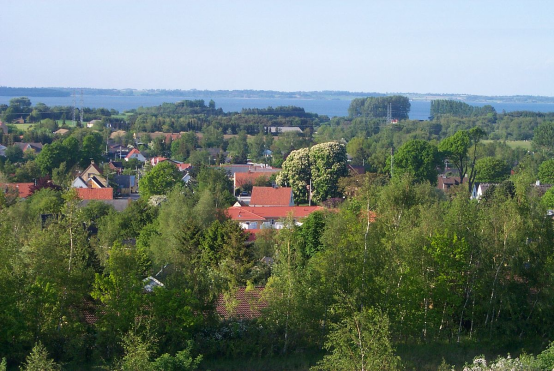
Halsnæs is surrounded by the sea, fjords and Lake Arresø – the water is always within reach. Almost the entire Northern coastline of Halsnæs is one long stretch of sandy beaches; some call this coastline ‘The Danish Riviera’. On the Southern side of Halsnaes, the shallow waters in the fjord create extremely child-friendly beaches too. The beaches constitute a major attraction for summer residents, Danish as well as international tourists, who enjoy bathing, swimming and water sports.
The inland landscape in Halsnæs is varied with woods, tidal meadows, heaths, streams and fields. Nature care is high priority in Halsnæs with around 900 hectares of preserved areas, including five Natura2000 areas that have been declared Special Areas of Conservation by the EU. The local authorities are responsible for preserving these areas, which are very interesting for nature enthusiasts with rare species of plants and animals.
Lake Arresø, the largest lake in Denmark, has its western part in the municipality. Originally a fjord connected to Kattegat, it was landlocked when the land northwest of the lake rose by 5 meters in the last ice age. In 1717, by royal order a canal was built (finished in 1719) to connect the lake with Roskilde fjord. The construction of the canal was necessary because the natural stream (Danish:å) from the lake to the fjord was filling up with sand. The water in the newly built canal was harnessed by a watermill, and the town of Frederiksværk basically was created through industrialization.
Transport
The county road is the primary access road to Hundested Harbor and the city center. The traffic to and from the commercial port runs along Strandvejen, while Nørregade is the city's shopping street and is unidirectional to the north. There is a connection between Nørregade and Strandvejen via two smaller streets, Havnegade and NordreBeddingsvej, as well as the slightly larger Sydhavnsvej. Furthermore, there are a number pedestrian links on the stretch.
The railway runs east around the city and continues to the port immediately southfor the county road. This means that there is a railway crossing in the southern leg of intersections Amtsvejen / Strandvejen and Amtsvejen / Nørregade. Hundested Station is on the corner of Læsevejen and Sydhavnsvej. Furthermore, there is one station at Hundested Harbor. The unloading road is a faceless road that runs east around the city and is the access road to onel arge parking lot east of Nørregade and to Hundested Station.
三、经济发展和规模
Halsnæs Municipality wants a coherent, fair and transparent financial managemen twith long-term economic goals set in economic policy. The purpose is to ensure a stable and robust economy. Economic balance In order to ensure ongoing stability, there must be financial balance over the budget period. balance Sheet must be ensured so that daily operations can be maintained at all times and there is sufficient time to make adjustments if necessary. The aim of the financial balance is an average cash balance of DKK 2,000 per share. inhabitant. When adopting the budget, the average cash balance must at any time the budget period adhere to the target. Looking forward to the average cash balance over the current or future fiscal year does not meet the measurement point, any budget adjustments must be considered.
Total financial result (income less operating expenses, interest, plant and supply)area) shows a profit of DKK 62.6 million, which is DKK 43.1 million. DKK better than the correct-budget. The main deviations are as follows:
Revenue: additional income of DKK 0.3 million kr.
Operating expenses : minor expenses of DKK 21.8 million kr.
Interest: DKK 2.8 million lower income kr.
Plant: Minor expenditure of DKK 23.8 million kr.
四、产业特点重点项目
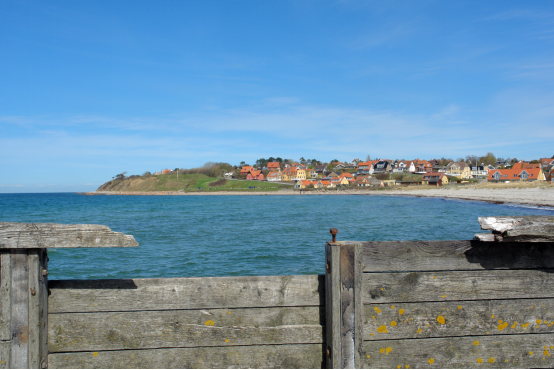
The Capital Region's most competitive prices on commercial land and the largest amount available in the private economy make Halsnæs Municipality an attractive choice for business start-ups and settlements.
Halsnæs Municipality comes in a clear first place in North Zealand when it comes to prices on commercial and construction land. This also means that the property tax in kroner and penny is usually lower than in neighboring municipalities.
With the coast, fjord and water on all sides, and with the ports of Frederiksværk and Hundested, there has traditionally always been easy access to the sea in Halsnæs. This has meant that professions in the fisheries, shipping and production for ships and boat yards have influenced the story. To this day, there are still traditional maritime professions in the ports, but today side by side with yachts, shops and cafes, as the ports are also recreational areas and natural gathering point for residents and tourists.
Frederiksværk is Denmark's first industrial city with cannon foundry, gunpowder and copper rolling mill. A special story that has also led steel mills and other large industrial companies to the area. Today, steel and metal production is still underway, and several subcontractors and support companies run their business on a daily basis. Elsewhere in the municipality of Halsnæs, medium-sized companies have also established themselves in bio-tech, plastic production, building and plant as well as food production.
Many of the area's local craftsmen carry their traditions, and companies often run the second or perhaps third generation in the family business. Regardless of the age of the company, however, there is a special emphasis on quality and pride in the work done, which goes again regardless of niche and material. This pride can be felt everywhere in the local environment, whether you meet boat builders, masons or mechanical engineers.
Halsnæs Vand A/S
Halsnæs Vand A/S is located in Frederiksværk, Hovedstaden, Denmark and is part of the Water & Sewer Utilities Industry. Halsnæs Vand A/S has 60 total employees across all of its locations and generates $12.00 million in sales (USD). There are 73 companies in the Halsnæs Vand A/S corporate family.
Annual revenue in 2019: $12.00 million USD
Halsnæs Affald A/S
Halsnæs Affald A/S is located in Frederiksværk, Hovedstaden, Denmark and is part of the Recyclable Material Wholesalers Industry. Halsnæs Affald A/S has 31 total employees across all of its locations and generates $9.12 million in sales (USD). There are 73 companies in the Halsnæs Affald A/S corporate family.
Annual revenue in 2019: $9.12 million USD
五、风景名胜,景点
Arresødal Castle
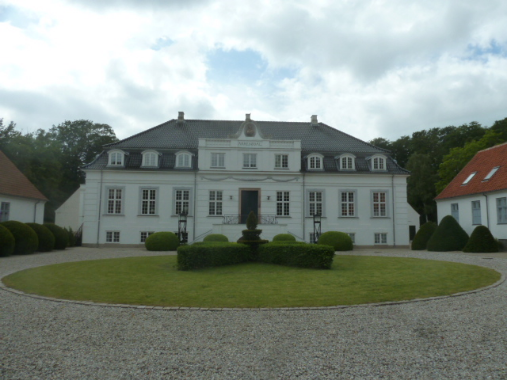
Arresødal is a manor estate situated in Frederiksværk, in Halsnæs Municipality on the island of Zealand in Region Hovedstaden, northeastern Denmark. Surrounded by forest to the west of lake Arresø, it now functions as a private hospice.
Arresødal was created as a manor in 1773 by Major General Johan Frederik Classen. He ordered the building of the main house in 1786-1788. Upon his death, Classen bequeathed Arresødal to Prince Charles of Hesse-Kassel, who owned the property until Crown Prince Frederik (later King Frederick VI of Denmark) bought the property in 1804.
In 1883 the property was purchased by the Classen Fideicommis. It was then a convalescent home for women until 1944 when it was taken over by first the Germans and then the freedom fighters who used the buildings as a prison. It once again became a convalescent home until 1984 when Arresødal was sold to KMD.
In subsequent years, Arresødal became a training centre and functioned as such until 2002 when the Indian Sai Baba movement bought the building from Kommunedata and took it over on 1 April. The plan was to establish an international school there. But in the light of a pending case against the movement's Indian guru Sai Baba, there was so much opposition from the mayor and local politicians that those responsible chose to withdraw. Frederiksværk Municipality bought the property and had to pay compensation for losses incurred by the movement.
The municipality sold Arresødal to Anette and Carsten Følsgaard for the construction of a private hospital and hospice. The couple took it over on 1 January 2003. In connection with the sale, the beautiful park extending down to Arresø was acquired by the municipality. The park is now open to the public.
The main building is designed in the Neoclassical style. It was rebuilt in 1908-1909 and partly in 2004. Two other buildings on the estate are protected.
Knud Rasmussen's House
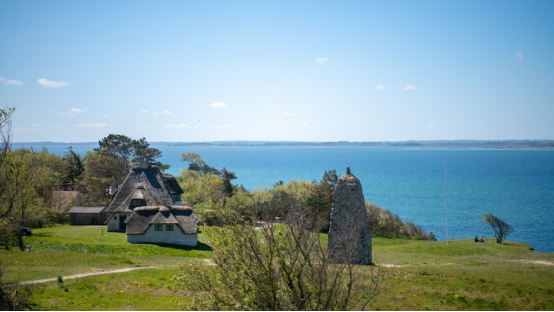
Address: Knud Rasmussensvej 9, 3390 Dog site
Situated close to the beautiful Spodsbjerg Lighthouse and with a fantastic view of the Kattegat, there is Knud Rasmussen's House.
In the middle of the beautiful area at Skansen in Hundested, a little north of Hundested Harbor is the iconic house where Knud Rasmussen worked between his many expeditions in Greenland.
The house is the main attraction of the city and today it serves as a museum and memorial for the famous polar scientist.
The Polar Scientist's cottage in the cottage style was built in 1917 after drawings by architect Helge Bojsen-Møller.
The house is located on a large natural plot overlooking the Kattegat, on the northern outskirts of Hundested, close to Spodsbjerg Lighthouse. In good weather you can see all the way to Hesselø, which is approx. 26 km away.
In other words, there is good reason to take a walk in the magnificent landscape and look inside the unusual and atmospheric workhouse.
Let the children explore the polar scientist's different and exciting house. The large open nature area around the house and the impressive warden invite play and proximity to the fantastic nature.
六、历史文化
Its name comes from Halsnæs, the peninsula that forms the western part of the municipality.
The municipality was created on January 1, 2007 as a merger of the former municipalities of Frederiksværk and Hundested. At first the merged municipality wore the hyphenated name Frederiksværk-Hundested, but it was changed to Halsnæs on January 1, 2008.
七、其他信息
Frederiksværk – industrial town
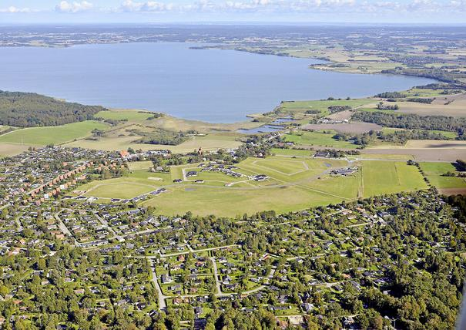
Frederiksvaerk is located in Northern Zealand on the narrow stretch of land between Denmark’s largest lake, Arresø and Roskilde Fjord. The development of Frederiksvaerk tells 250 years of Danish industrial history. In 1717-19, on what was just bare land haunted by sandy winds, a canal was dug to secure sufficient outlet for Lake Arresø. At the same time one of the best supplies of water power in Denmark was created.
Frederiksværk has been selected as a national cultural heritage site for its unique industrial history. Old but well preserved buildings tell the story of how Danish industrialization was born here.
Compared to most other Danish towns, that have a recorded history of a thousand years, Frederiksvaerk is young. Nevertheless, it boasts a remarkable history along the lines of well-known English factory villages such as Coalbrookdale, New Lanark and Saltaire. It is a planned town with industry as its essence. Once Frederiksvaerk housed the national armament industry and was the largest supplier of military equipment to the Royal Danish Navy and Army. The ambition of “creating a Birmingham” in Denmark is explicitly mentioned in the historic documents.
AGATS & IRON GUNS
In the 1720’s an agate grinding mill was built at the eastern part of the canal, close to the lake. In 1751 the French engineer and blacksmith Etienne Jandin de Peyrembert was summoned to produce guns from wrought iron, an adventure that proved extremely expensive and left Peyrembert with an enormous debt to the Danish state – and no useful guns.
GUNS & POWDER
The real breakthrough was made by the general J.F. Classen who developed the place into a prosperous manufacturing society. In the centre was the enormous foundry, Gjethuset, producing guns and ammunition for the Danish Army and Navy. The foundry was surrounded by a large number of dwellings, often in combination with work shops. A new canal and an extensive powder works with a number of mills and other buildings were erected. J.F. Classen created a plan for the whole area, planting trees, constructing roads etc.
THE IRON WORKS
Later, Frederiksvaerk became a more traditional industrial town with extensive iron works. In 1868 the iron manufacturer Anker Heegaard enlarged the production complex and produced loco mobiles, steam engines and glazed pots and pans in large numbers. The first Danish-built steam engine was constructed in the Frederiksvaerk workshops in 1828 for use in the relatively new copper-rolling works, which were originally founded by an English engineer.
THE DANISH STEEL WORKS
In 1940, The Danish Steel Works was built on an artificial island in the Fjord and Frederiksvaerk became the only Danish town of true modern heavy industry. It was the only steel works in the country. The production was based on scrap iron and can therefore be considered as a recycling pioneer. The main purpose of the company was to supply Danish industry with rolled steel, especially the shipbuilding industry. The Steelworks is still in business but nowadays divided into three separate companies owned by Russians, Ukrainians and Swiss-Italians.
八、联系方式
Mayor: Steffen Jensen
Address: Town Hall Square 1, 3300 Frederiksværk
Telephone: +45 47784000
mail: mail@halsnaes.dk
Facebook: https://www.facebook.com/Halsn%C3%A6s-Kommune-215245251974211/
Website: https://halsnaes.dk/
